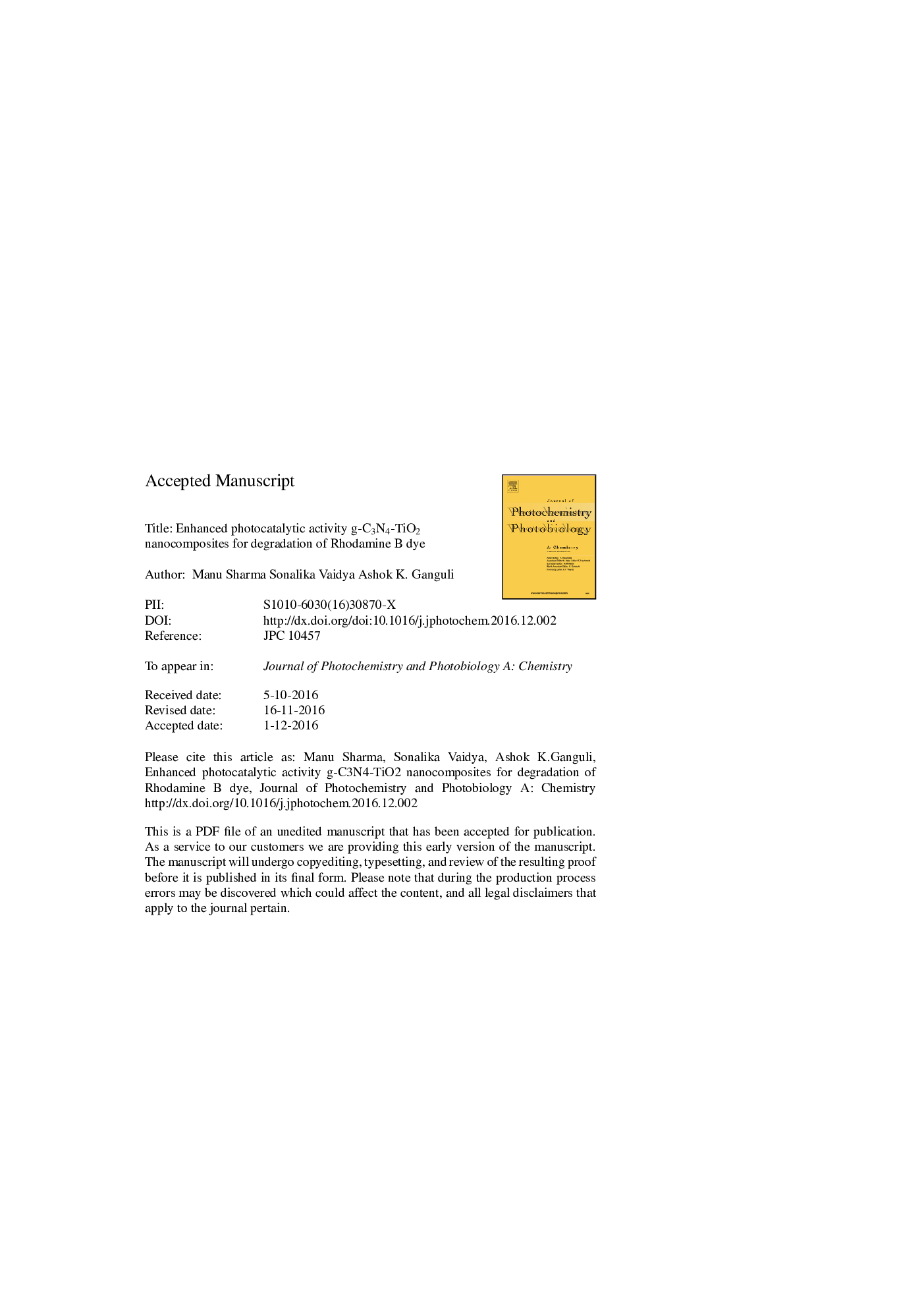| Article ID | Journal | Published Year | Pages | File Type |
|---|---|---|---|---|
| 4754142 | Journal of Photochemistry and Photobiology A: Chemistry | 2017 | 25 Pages |
Abstract
g-C3N4-TiO2 nanocomposites have been synthesized by simple chemical route with high photocatalytic activity under visible light irradiation. Different weight ratio of catalyst were used for the photodegradation of Rhodamine B dye. It was observed that the composite with 2:1 wt ratio of g-C3N4 and TiO2 respectively shows maximum photocatalytic activity with photocatalytic rate as â¼0.17Â minâ1 which is â¼10 times higher than pure TiO2. At an optimal concentration of g-C3N4, lifetime of the excited electrons was found to increase from 2.65 to 10.20Â ns in the composite compared to TiO2, suggesting efficient separation of electrons and holes. The favorable band position of g-C3N4 and composite supports the increase in the charge separation rate of electron and hole during photocatalytic reaction. The role of active species involved in the degradation of the organic dye during photocatalysis by g-C3N4-TiO2 has been investigated (like radical species).
Keywords
Related Topics
Physical Sciences and Engineering
Chemical Engineering
Bioengineering
Authors
Manu Sharma, Sonalika Vaidya, Ashok K. Ganguli,
